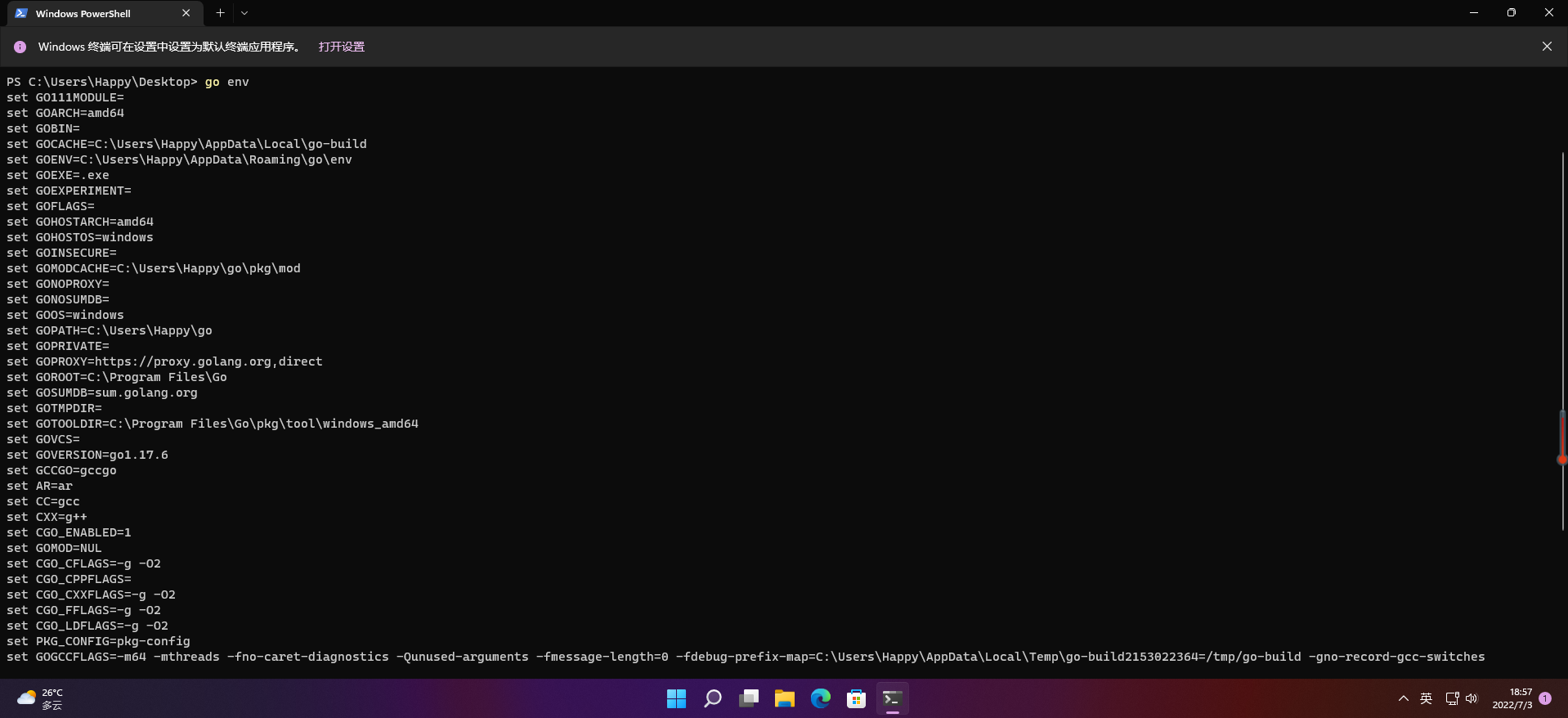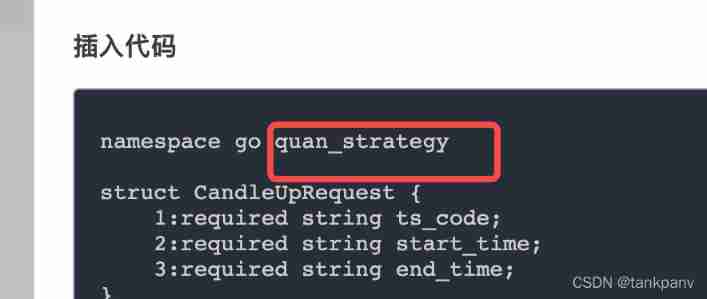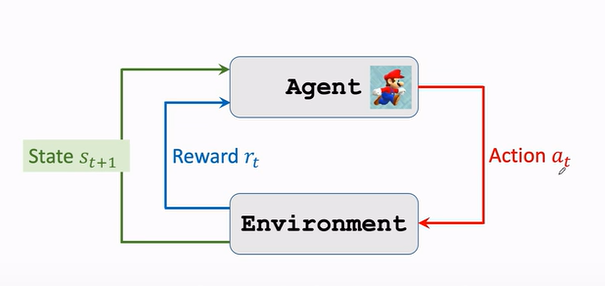One . linux Common commands
see linux System version
Mode one : lsb_release -a If the command is not found, use the command to install :yum install -y redhat-lsb Mode two :cat /etc/redhat-release ( Apply to RedHat、CentOS) Mode three :cat /etc/issue

Firewall related
CentOS7
View firewall status :firewall-cmd --state
notes :running—— Turn on ,not running —— close
Turn on the firewall :systemctl start firewalld.service
Turn off firewall :systemctl stop firewalld.service
Turn off startup :systemctl disable firewalld.service
Turn on the power and start :systemctl enable firewalld.serviceCentOS6
service The way : View firewall status :service iptables status Turn on the firewall :service iptables start Turn off firewall : service iptables stop iptables The way : Enter the first init.d Catalog , The order is as follows : [[email protected] ~]# cd /etc/init.d/ [[email protected] init.d]# View firewall status : [[email protected] init.d]# /etc/init.d/iptables status Turn off the firewall temporarily : [[email protected] init.d]# /etc/init.d/iptables stop restart iptables: [[email protected] init.d]# /etc/init.d/iptables restart
Release linux cache
sync && echo '1' > /proc/sys/vm/drop_caches sync && echo '2' > /proc/sys/vm/drop_caches sync && echo '3' > /proc/sys/vm/drop_caches sync: Write all unwritten system buffers to disk , Include modified i-node、 Delayed block I/O And read-write mapping files . Otherwise, in the process of releasing the cache , You may lose unsaved files 0 – Don't release 1 – Free page cache 2 – Release dentries and inodes 3 – Free all caches
Linux Log view
Output the log of a certain time period in the log file to a new file sed -n '/2019-04-22 16:10:/,/2019-04-22 16:20:/p' log.log > bbb.txt Find the number of lines before and after keywords in a log file cat filename | grep keyword -C10 -C: How many lines are displayed before and after -A: How many lines are displayed after -B: Show how many lines before
View port usage
-- Check the port status netstat -tnulp | grep 26379 -- linux View port usage netstat -anp | grep 80 -- Port information used by the current environment netstat -nultp -- The command was not found. Use the following installation yum -y install net-tools
Linux Timing task
#linux Timing task : service crond start // Start the service service crond stop // Close the service service crond restart // Restart the service service crond reload // service crond reload service crond status // see crontab Service status # install crond yum -y install vixie-cron yum -y install crontabs # chkconfig mysqld on chkconfig –level 345 crond on # restart rsyslog # restart cronlog( No log output with this ) sudo service rsyslog restart Log location : /var/log/cronXXX
# View tasks
crontab -l
# Editing task
crontab -e
Command time format : * * * * * command branch when Japan month Zhou
The first 1 List minutes 1~59 Per minute * perhaps */1 Express
The first 2 List hours 1~23(0 Express 0 spot ) The first 3 List date 1~31 The first 4 List month 1~12 The first 5 Column ID week 0~6(0 Sunday ) The first 6 Column command to run
some Crontab Examples of scheduled tasks :
30 21 * * * /usr/local/etc/rc.d/lighttpd restart # Every night 21:30 restart apache
45 4 1,10,22 * * /usr/local/etc/rc.d/lighttpd restart # monthly 1、10、22 Japanese 4 : 45 restart apache
10 1 * * 6,0 /usr/local/etc/rc.d/lighttpd restart # Every Saturday 、 Sunday's 1 : 10 restart apache
0,30 18-23 * * * /usr/local/etc/rc.d/lighttpd restart # Every day 18 : 00 to 23 : 00 Between every 30 Minutes to restart apache
0 23 * * 6 /usr/local/etc/rc.d/lighttpd restart # Every Saturday 11 : 00 pm restart apache
* 23-7/1 * * * /usr/local/etc/rc.d/lighttpd restart # evening 11 Point to morning 7 Between points , Restart every hour apache
* */1 * * * /usr/local/etc/rc.d/lighttpd restart # Restart every hour apache
0 11 4 * mon-wed /usr/local/etc/rc.d/lighttpd restart # Monthly 4 Day and Monday to Wednesday every week 11 Click restart apache
0 4 1 jan * /usr/local/etc/rc.d/lighttpd restart # On January 1st 4 Click restart apache
*/30 * * * * /usr/sbin/ntpdate cn.pool.ntp.org # Synchronize the time every half an hour
0 */2 * * * /sbin/service httpd restart # Restart every two hours apache
50 7 * * * /sbin/service sshd start # Every day 7:50 Turn on ssh service
50 22 * * * /sbin/service sshd stop # Every day 22:50 close ssh service
0 0 1,15 * * fsck /home # monthly 1 Number and 15 No. check /home disk
1 * * * * /home/bruce/backup # The first minute of every hour /home/bruce/backup This file
00 03 * * 1-5 find /home "*.xxx" -mtime +4 -exec rm {} \; # From Monday to Friday every week 3 O 'clock , In the catalog /home in , Find the file name *.xxx The file of , And delete 4 Documents before .
30 6 */10 * * ls # Monthly 1、11、21、31 Day yes 6:30 Do it once ls command
nfs mount
# Check the mount disk cat /etc/fstab # Re mount mount -a
Two . Docker Common commands
see docker List of containers :
docker ps
Check the log
Log view syntax : docker logs [OPTIONS] CONTAINER OPTIONS explain : -f : Trace log output --since : Show all logs for a start time -t : Display time stamp --tail : List only the latest N Container log View log command :docker logs -f Containers ID Real time view of the last 500 Logs :docker logs -f --tail=500 Containers ID Look at the recent 30 Minute log :docker logs --since 30m Containers ID Check the latest log after a certain time 500 Logs :docker logs --since="2021-11-30" --tail=500 Containers ID Check the log after a certain time :docker logs -t --since="2021-11-30T00:00:00" Containers ID Check the log of a certain period of time :docker logs -t --since="2021-11-30T00:00:00" --until "2021-12-30T00:00:00" Containers ID
Image export import
# Export image to file $ docker save -o nginx-alpine.tar nginx:alpine # Import mirror $ docker load -i nginx-alpine.tar
Image delete
-- Delete the specified image docker rmi --force [-f] $(docker images | grep tarzan-mes | grep "7 months"| awk '{print $3}') -- Delete the unlabeled image docker rmi [-f] $(docker images -q | awk '/^<none>/ { print $3 }') -- Delete all images docker rmi [-f] $(docker images -qa) This kind of unlabeled image is also called A false image (dangling image) , You can use the following command to display this kind of image specifically : docker image ls -f dangling=true Generally speaking , The mirror image has lost its value of existence , It can be deleted at will , You can use the following command to delete . docker rmi $(docker images -q -f dangling=true)
Mirror operation
docker build . -t hzero-register:v200 -f ./../src/main/docker/Dockerfile docker tag hzero-register:v200 k8s1.cluster.local:5000/hzero-register:v200 docker push k8s1.cluster.local:5000/hzero-register:v200
3、 ... and . K8s command
[[email protected]~]#kubectl -n mes-pro cp./jdk-8u291-linux-x64.tar.gz tarzan-mes-69994cdfdb-kfg96:/jdk.tar.gz [[email protected]-prd-k8s1 ~]kubectl -n mes-pro exec -it tarzan-mes-69994cdfdb-kfg96 -/bin/bash
Log correlation
View a certain pod Previous version log :kubectl logs -p -n mes-pro tarzan-mes-6bd4bf5b79-xmkgk see pod Last exit details :kubectl describe pod tarzan-mes-864bcbcd46-gw5zm -n mes-pro k8s Node installation arthas : kubectl -n uat exec mes-interface-7bbf6d64c9-88dhw -- wget https://arthas.aliyun.com/arthas-boot.jar && java -jar arthas-boot.jar 1 remarks : final 1 Is a process,
take pod The logs in are copied to the host
kubectl exec -n service tarzan-mes-c75587bfc-jpjp9 -- tar cf - data/tarzan/mes/tarzan-mes-2022-05-15.0.log | tar xf - -C /tmp
pod It contains telnet
apt update
apt install telnetOther common commands
kubectl get po -A kubectl get nodes
kubectl get pod -A -o wide kubectl describe nodes wmsdevelapp kubectl taint node wmsdevelapp node.kubernetes.io/unschedulable:NoSchedule- kubectl top pod -n mesuat journalctl -u kubelet.service -- kubectl taint nodes 192.168.0.137 key1=value1:NoSchedule-
Four 、Mysql
View the transaction being locked
SELECT * FROM INFORMATION_SCHEMA.INNODB_LOCKS;
View transactions waiting for locks
SELECT * FROM INFORMATION_SCHEMA.INNODB_LOCK_WAITS;
Inquire about Ongoing transactions
SELECT * FROM information_schema.INNODB_TRX;
Inquire about mysql Processes that exist in the database
select * from information_schema.`PROCESSLIST`(show processlist;)
Kill thread
kill Threads id
clear through InnoDB_row_lock State variables are used to analyze the contention of row locks on the system
show status like 'innodb_row_lock%'; The description of each status is as follows : Innodb_row_lock_current_waits: The number of locks currently waiting ; Innodb_row_lock_time: The total length of time from system startup to lock up ; Innodb_row_lock_time_avg: The average time it takes to wait ; Innodb_row_lock_time_max: The longest waiting time from system startup to now ; Innodb_row_lock_waits: The total number of times the system has been waiting since it was started ; For this 5 Two state variables , Here's the important thing : Innodb_row_lock_time_avg,Innodb_row_lock_waits,Innodb_row_lock_time. Especially when waiting times are high , And every time I wait for a long time , We need to analyze why there are so many waiting in the system , Then according to the analysis results to formulate optimization .

select @a1:=VARIABLE_VALUE as a1 from information_schema.GLOBAL_STATUS where VARIABLE_NAME='innodb_os_log_written' union all select sleep(60) union all select @a2:=VARIABLE_VALUE as a2 from information_schema.GLOBAL_STATUS where VARIABLE_NAME='innodb_os_log_written'; select round((@a2[email protected])/1024/1024/@@innodb_log_files_in_group) as MB; -------------------- SELECT p2.`HOST` Blockedhost, p2.`USER` BlockedUser, r.trx_id BlockedTrxId, r.trx_mysql_thread_id BlockedThreadId, TIMESTAMPDIFF( SECOND, r.trx_wait_started, CURRENT_TIMESTAMP ) WaitTime, r.trx_query BlockedQuery, l.lock_table BlockedTable, m.`lock_mode` BlockedLockMode, m.`lock_type` BlockedLockType, m.`lock_index` BlockedLockIndex, m.`lock_space` BlockedLockSpace, m.lock_page BlockedLockPage, m.lock_rec BlockedLockRec, m.lock_data BlockedLockData, p.`HOST` blocking_host, p.`USER` blocking_user, b.trx_id BlockingTrxid, b.trx_mysql_thread_id BlockingThreadId, b.trx_query BlockingQuery, l.`lock_mode` BlockingLockMode, l.`lock_type` BlockingLockType, l.`lock_index` BlockingLockIndex, l.`lock_space` BlockingLockSpace, l.lock_page BlockingLockPage, l.lock_rec BlockingLockRec, l.lock_data BlockingLockData, IF (p.COMMAND = 'Sleep', CONCAT(p.TIME,' seconds'), 0) idel_in_trx FROM information_schema.INNODB_LOCK_WAITS w INNER JOIN information_schema.INNODB_TRX b ON b.trx_id = w.blocking_trx_id INNER JOIN information_schema.INNODB_TRX r ON r.trx_id = w.requesting_trx_id INNER JOIN information_schema.INNODB_LOCKS l ON w.blocking_lock_id = l.lock_id AND l.`lock_trx_id`=b.`trx_id` INNER JOIN information_schema.INNODB_LOCKS m ON m.`lock_id`=w.`requested_lock_id` AND m.`lock_trx_id`=r.`trx_id` INNER JOIN information_schema. PROCESSLIST p ON p.ID = b.trx_mysql_thread_id INNER JOIN information_schema. PROCESSLIST p2 ON p2.ID = r.trx_mysql_thread_id ORDER BY WaitTime DESC; -------------- 00:0c:29:b3:b7:36 brd ff:ff:ff:ff:ff:ff SELECT p2.`HOST` Blocked party host, p2.`USER` Blocked user , r.trx_id Blocked party transactions id, r.trx_mysql_thread_id Blocked party thread number , TIMESTAMPDIFF( SECOND, r.trx_wait_started, CURRENT_TIMESTAMP ) Waiting time , r.trx_query Blocked queries , l.lock_table Blocking side locked table , m.`lock_mode` Lock mode of blocked party , m.`lock_type` " The lock type of the blocked party ( Table lock or row lock )", m.`lock_index` The index locked by the blocking party , m.`lock_space` The blocked party locks the object space_id, m.lock_page The number of pages locked by blocked party transactions , m.lock_rec The number of rows locked by the blocked party transaction , m.lock_data The primary key value of the blocked transaction lock record , p.`HOST` Blocking host , p.`USER` Blocking user , b.trx_id Blocking party transactions id, b.trx_mysql_thread_id Blocking party thread number , b.trx_query Blocking party query , l.`lock_mode` Blocking side lock mode , l.`lock_type` " Lock type of blocking party ( Table lock or row lock )", l.`lock_index` Blocked index , l.`lock_space` Blocking side lock object space_id, l.lock_page The number of blocked transaction lock pages , l.lock_rec The number of blocked transaction lock rows , l.lock_data The primary key value of the blocking party transaction lock record , IF (p.COMMAND = 'Sleep', CONCAT(p.TIME,' second '), 0) The idle time of the blocking party transaction FROM information_schema.INNODB_LOCK_WAITS w INNER JOIN information_schema.INNODB_TRX b ON b.trx_id = w.blocking_trx_id INNER JOIN information_schema.INNODB_TRX r ON r.trx_id = w.requesting_trx_id INNER JOIN information_schema.INNODB_LOCKS l ON w.blocking_lock_id = l.lock_id AND l.`lock_trx_id`=b.`trx_id` INNER JOIN information_schema.INNODB_LOCKS m ON m.`lock_id`=w.`requested_lock_id` AND m.`lock_trx_id`=r.`trx_id` INNER JOIN information_schema. PROCESSLIST p ON p.ID = b.trx_mysql_thread_id INNER JOIN information_schema. PROCESSLIST p2 ON p2.ID = r.trx_mysql_thread_id ORDER BY Waiting time DESC; -------------------------------------------------------------------
Check the transaction waiting status

select r.trx_id waiting_trx_id, r.trx_mysql_thread_id waiting_thread, r.trx_query waiting_query, b.trx_id blocking_trx_id, b.trx_mysql_thread_id blocking_thread, b.trx_query blocking_query from information_schema.innodb_lock_waits w inner join information_schema.innodb_trx b on b.trx_id = w.blocking_trx_id inner join information_schema.innodb_trx r on r.trx_id = w.requesting_trx_id;
View more specific transaction waiting status

select b.trx_state, e.state, e.time, d.state as block_state, d.time as block_time, a.requesting_trx_id, a.requested_lock_id, b.trx_query, b.trx_mysql_thread_id, a.blocking_trx_id, a.blocking_lock_id, c.trx_query as block_trx_query, c.trx_mysql_thread_id as block_trx_mysql_tread_id from information_schema.innodb_lock_waits a left join information_schema.innodb_trx b on a.requesting_trx_id = b.trx_id left join information_schema.innodb_trx c on a.blocking_trx_id = c.trx_id left join information_schema.processlist d on c.trx_mysql_thread_id = d.id left join information_schema.processlist e on b.trx_mysql_thread_id = e.id order by a.requesting_trx_id;
View unclosed transactions

–mysql 5.6 select a.trx_id, a.trx_state, a.trx_started, a.trx_query, b.id, b.user, b.db, b.command, b.time, b.state, b.info, c.processlist_user, c.processlist_host, c.processlist_db, d.sql_text from information_schema.innodb_trx a left join information_schema.processlist b on a.trx_mysql_thread_id = b.id and b.command = 'sleep' left join performance_schema.threads c on b.id = c.processlist_id left join performance_schema.events_statements_current d on d.thread_id = c.thread_id; –mysql 5.5 select a.trx_id, a.trx_state, a.trx_started, a.trx_query, b.id, b. user, b. host, b.db, b.command, b.time, b.state, b.info from information_schema.innodb_trx a left join information_schema.processlist b on a.trx_mysql_thread_id = b.id where b.command = 'sleep';
View transactions that have not been closed for some time
select trx_id, trx_started, trx_mysql_thread_id from information_schema.innodb_trx where trx_started < date_sub(now(), interval 1 minute) and trx_operation_state is null and trx_query is null;
mysql Query in progress sql
select * from information_schema.`PROCESSLIST` where info is not null ORDER BY time desc;mysql Query slow log file location
show variables like "%slow_query_log%";
Look for fragmented tables

Method 1 : select table_schema db, table_name, data_free, engine from information_schema.tables where table_schema not in ('information_schema', 'mysql') and data_free > 0; Method 2 : SELECT TABLE_NAME,(DATA_LENGTH+INDEX_LENGTH)/1024/1024 size_mb,data_free/1024/1024 free_mb,TABLE_ROWS FROM information_schema.tables where table_schema not in ('information_schema', 'mysql') and data_free/1024/1024>=1 order by free_mb desc;
Clean up table fragments
Method 1
alter table Table name engine=InnoDB alter table tableName engine=InnoDB; # Method 2
optimize table Table name optimize table tableName;
Find the table without primary key

Select t.table_schema,t.table_name,t.engine,t.table_rows From information_schema.tables as t Left join information_schema.table_constraints as tc On tc.table_schema=t.table_schema And tc.table_name=t.table_name And tc.constraint_type='PRIMARY KEY' Where t.table_type='BASE TABLE' And tc.constraint_type is null And t.table_schema not in ('mysql','performance_schema','information_schema');
Slow log related settings
more /etc/my.cnf show variables like '%slow%'; show variables like '%long%'; set global slow_query_log=off; set global slow_query_log=on; set @@long_query_time=10;
5、 ... and 、ORACLE
oralce monitor
Check the listening status
lsnrctl status
Start listening
lsnrctl start
lsnrctl stop
lsnrctl stop
Register monitoring manually
alter system register;oracle Password expiration processing
Query the default password saving time : SELECT * FROM dba_profiles WHERE profile='DEFAULT' AND resource_name='PASSWORD_LIFE_TIME'; Change to indefinite , If you need to change your password regularly , You can set the number of days required for each password change cycle ( Such as :30:, Indicates every pass 30 You need to reset your password every day ) No deadline :
ALTER PROFILE DEFAULT LIMIT PASSWORD_LIFE_TIME UNLIMITED; 30 The password is valid for days :
ALTER PROFILE DEFAULT LIMIT PASSWORD_LIFE_TIME 30;
Switch to PDB perform :
alter session set container=orcl1;
Change Password :
alter user Password expired USERNAME identified by password ;Archive log related
Delete the file before the specified time find ./ -name *.log -mtime +7| xargs rm -rf crosscheck archivelog all; Delete expired logs delete noprompt expired archivelog all; Delete all logs DELETE EXPIRED archivelog all; Delete the log three days ago delete archivelog until time 'sysdate -3';
Availability status
select INSTANCE_NUMBER,INSTANCE_NAME,STARTUP_TIME,STATUS from gv$instance;
Table space utilization status

SELECT d.tablespace_name "Name", d.status "Status", TO_CHAR (NVL (a.BYTES / 1024 / 1024, 0), '99,999,990.90') "Size (M)", TO_CHAR (NVL (a.BYTES - NVL (f.BYTES, 0), 0) / 1024 / 1024, '99999999.99' ) USE, TO_CHAR (NVL ((a.BYTES - NVL (f.BYTES, 0)) / a.BYTES * 100, 0), '990.00' ) "Used %" FROM SYS.dba_tablespaces d, (SELECT tablespace_name, SUM (BYTES) BYTES FROM dba_data_files GROUP BY tablespace_name) a, (SELECT tablespace_name, SUM (BYTES) BYTES FROM dba_free_space GROUP BY tablespace_name) f WHERE d.tablespace_name = a.tablespace_name(+) AND d.tablespace_name = f.tablespace_name(+) AND NOT (d.extent_management LIKE 'LOCAL' AND d.CONTENTS LIKE 'TEMPORARY') UNION ALL SELECT d.tablespace_name "Name", d.status "Status", TO_CHAR (NVL (a.BYTES / 1024 / 1024, 0), '99,999,990.90') "Size (M)", TO_CHAR (NVL (t.BYTES, 0) / 1024 / 1024, '99999999.99') USE, TO_CHAR (NVL (t.BYTES / a.BYTES * 100, 0), '990.00') "Used %" FROM SYS.dba_tablespaces d, (SELECT tablespace_name, SUM (BYTES) BYTES FROM dba_temp_files GROUP BY tablespace_name) a, (SELECT tablespace_name, SUM (bytes_cached) BYTES FROM v$temp_extent_pool GROUP BY tablespace_name) t WHERE d.tablespace_name = a.tablespace_name(+) AND d.tablespace_name = t.tablespace_name(+) AND d.extent_management LIKE 'LOCAL' AND d.CONTENTS LIKE 'TEMPORARY';
Buffer hit rate
select(1-(sum(decode(name,'physical reads',value,0))/(sum(decode(name,'db block gets',value,0)) +sum(decode(name,'consistent gets',value,0)))))*100"Hit Ratio" from gv$sysstat;
Data dictionary cache hit rate
select(1-(sum(getmisses)/sum(gets)))*100"Hit Ratio"from gv$rowcache;
Library cache hit rate
selectSum(Pins)/(Sum(Pins)+Sum(Reloads))*100"Hit Ratio"from gV$LibraryCache;
PGA Memory sort hit rate
select a.INST_ID,a.NAME,a.value "Disk Sorts", b.value "Memory Sorts",round((100*b.value)/decode((a.value+b.value),0,1,(a.value+b.value)),2)"Pct Memory Sorts"from gv$sysstat a, gv$sysstat b where a.name ='sorts (disk)'and b.name ='sorts (memory)';
remarks : These values are in 98% The above is better Data fragment status

USED_MB: Indicates that the object has used size FRAG_MB: Indicates the size of the fragment FRAGMENT_PER: Indicates the percentage of fragmentation alter session set nls_date_format='yyyy-mm-dd hh24:mi:ss'; /*set lines 220 pages 300 col owner for a30 col TABLE_NAME for a50 col SEGMENT_TYPE for a20*/ SELECT /*+ parallel(b 4)*/ OWNER, TABLE_NAME, tablespace_name, SEGMENT_TYPE, segment_space_management MANAGEMENT, TABLE_MB USED_MB, ROUND(WASTE_PER * TABLE_MB /100,2) FRAG_MB, WASTE_PER fragment_per, LAST_ANALYZED FROM (SELECT OWNER, SEGMENT_NAME TABLE_NAME, LAST_ANALYZED, SEGMENT_TYPE, GREATEST(ROUND(100*(NVL(HWM - AVG_USED_BLOCKS,0)/ GREATEST(NVL(HWM,1),1)),2),0) WASTE_PER, ROUND(BYTES / POWER(1024,2),2) TABLE_MB, NUM_ROWS, BLOCKS, EMPTY_BLOCKS, HWM HIGHWATER_MARK, AVG_USED_BLOCKS, CHAIN_PER, EXTENTS, MAX_EXTENTS, ALLO_EXTENT_PER, DECODE(GREATEST(MAX_FREE_SPACE - NEXT_EXTENT,0),0,'N','Y') CAN_EXTEND_SPACE, NEXT_EXTENT, MAX_FREE_SPACE, O_TABLESPACE_NAME TABLESPACE_NAME, block_size, segment_space_management FROM (SELECT A.OWNER OWNER, A.SEGMENT_NAME, A.SEGMENT_TYPE, A.BYTES, B.NUM_ROWS, A.BLOCKS BLOCKS, B.EMPTY_BLOCKS EMPTY_BLOCKS, A.BLOCKS - B.EMPTY_BLOCKS -1 HWM, DECODE(ROUND((B.AVG_ROW_LEN * NUM_ROWS *(1+(PCT_FREE /100)))/ dt.block_size,0),0,1, ROUND((B.AVG_ROW_LEN * NUM_ROWS *(1+(PCT_FREE /100)))/ dt.block_size,0))+2 AVG_USED_BLOCKS, ROUND(100*(NVL(B.CHAIN_CNT,0)/ GREATEST(NVL(B.NUM_ROWS,1),1)), 2) CHAIN_PER, ROUND(100*(A.EXTENTS / A.MAX_EXTENTS),2) ALLO_EXTENT_PER, A.EXTENTS EXTENTS, A.MAX_EXTENTS MAX_EXTENTS, B.NEXT_EXTENT NEXT_EXTENT, B.TABLESPACE_NAME O_TABLESPACE_NAME, B.LAST_ANALYZED, dt.block_size, DT.segment_space_management FROM SYS.DBA_SEGMENTS A, SYS.DBA_TABLES B, dba_tablespaces dt WHERE A.OWNER = B.OWNER and SEGMENT_NAME = TABLE_NAME and dt.segment_space_management ='AUTO' and B.tablespace_name in('TS_RPT_DATA','IX_RPT_DATA','PERFSTAT') and dt.tablespace_name = a.tablespace_name and b.last_analyzed > to_date('20210501','yyyymmdd') union all SELECT A.OWNER OWNER, SEGMENT_NAME ||'.'|| B.PARTITION_NAME, SEGMENT_TYPE, BYTES, B.NUM_ROWS, A.BLOCKS BLOCKS, B.EMPTY_BLOCKS EMPTY_BLOCKS, A.BLOCKS - B.EMPTY_BLOCKS -1 HWM, DECODE(ROUND((B.AVG_ROW_LEN * B.NUM_ROWS *(1+(B.PCT_FREE /100)))/ dt.block_size,0),0,1, ROUND((B.AVG_ROW_LEN * B.NUM_ROWS *(1+(B.PCT_FREE /100)))/ dt.block_size,0))+2 AVG_USED_BLOCKS, ROUND(100*(NVL(B.CHAIN_CNT,0)/ GREATEST(NVL(B.NUM_ROWS,1),1)),2) CHAIN_PER, ROUND(100*(A.EXTENTS / A.MAX_EXTENTS),2) ALLO_EXTENT_PER, A.EXTENTS EXTENTS, A.MAX_EXTENTS MAX_EXTENTS, B.NEXT_EXTENT, B.TABLESPACE_NAME O_TABLESPACE_NAME, d.last_analyzed, dt.block_size, DT.segment_space_management FROM SYS.DBA_SEGMENTS A, SYS.DBA_TAB_PARTITIONS B, SYS.DBA_TABLES D, dba_tablespaces dt WHERE A.OWNER = B.TABLE_OWNER and SEGMENT_NAME = B.TABLE_NAME and SEGMENT_TYPE ='TABLE PARTITION' and dt.segment_space_management ='AUTO' and B.tablespace_name in('TS_RPT_DATA','IX_RPT_DATA','PERFSTAT') and dt.tablespace_name = a.tablespace_name AND D.OWNER = B.TABLE_OWNER AND D.TABLE_NAME = B.TABLE_NAME AND A.PARTITION_NAME = B.PARTITION_NAME AND D.last_analyzed > to_date('20210501','yyyymmdd')), (SELECT TABLESPACE_NAME F_TABLESPACE_NAME, MAX(BYTES) MAX_FREE_SPACE FROM SYS.DBA_FREE_SPACE GROUP BY TABLESPACE_NAME) WHERE F_TABLESPACE_NAME = O_TABLESPACE_NAME AND GREATEST(ROUND(100*(NVL(HWM - AVG_USED_BLOCKS,0)/GREATEST(NVL(HWM,1),1)),2),0)>12 AND OWNER notin('SYS','SYSMAN') AND BLOCKS > POWER(1024,2)/ block_size) b where ROUND(WASTE_PER * TABLE_MB /100,2)>100 ORDER BY 7 DESC;
Database process and deadlock process status

SELECT distinct SESS.SID, SESS.SERIAL#, LO.ORACLE_USERNAME, LO.OS_USER_NAME, AO.OBJECT_NAME, LO.LOCKED_MODE, 'ALTER SYSTEM KILL SESSION '''|| SESS.SID ||','|| SESS.SERIAL# || ''' immediate;', SESS.STATUS FROM GV$LOCKED_OBJECT LO, DBA_OBJECTS AO, GV$SESSION SESS, Gv$process p WHERE AO.OBJECT_ID = LO.OBJECT_ID AND LO.SESSION_ID = SESS.SID and SESS.paddr = p.addr;
Oralce See check for configuration parameters
/*set linesize 200
col name format a40
col value format a40
set pagesize 2000*/
select name,value from v$parameter where isdefault='FALSE' order by 1;6、 ... and 、 HTTP Details of status code
2XX success
· 200 OK, Indicates that the request from the client is processed correctly on the server side · 204 No content, Indicates that the request was successful , But the response message does not contain the main body of the entity · 206 Partial Content, Make a range request
3XX Redirect
· 301 moved permanently, Permanent redirection , Indicates that the resource has been assigned a new URL · 302 found, Temporary redirections , Indicates that the resource has been temporarily assigned a new URL · 303 see other, Indicates that there is another URL, You should use GET Methods clove resources · 304 not modified, Indicates that the server allows access to resources , But due to the occurrence of the request not meeting the conditions · 307 temporary redirect, Temporary redirection , and 302 The meaning is the same
4XX Client error
· 400 bad request, Syntax error in request message · 401 unauthorized, Indicates that the request sent needs to be passed HTTP Authentication information for authentication · 403 forbidden, Indicates that access to the requested resource is denied by the server · 404 not found, Indicates that the requested resource was not found on the server
5XX Server error
· 500 internal sever error, Indicates that an error occurred on the server side while executing the request · 503 service unavailable, Indicates that the server is temporarily overloaded or under maintenance , Unable to process request
403 Detailed explanation

On the whole , return 403 The status code is , Deny or prohibit access to . however , Although the server denies or prohibits access , But it has understood your request . The specific reasons are as follows : Error code :403.1 HTTP 403.1 Blocking access : Disable executable access Internet information service The reason is that the execution authority is not enough , The solution is : open “ Management tools ” Of “Internet information service ”, The right choice “WEB Site properties ” Of “ Home directory ” tab , hold “ Executive license ” Options from “ nothing ” Change it to “ Pure script ” Just fine . Error code :403.2 403.2 The error is due to " Read " Access is prohibited . This error is caused by no default web page available and directory browsing is not enabled for the directory , Or to display HTML The directory where the web page resides is only marked " Executable " or " Script " jurisdiction . Error code :403.3 403.3 The error is due to " write in " Access is prohibited , When trying to upload a file to a directory or modify a file in a directory , But this directory does not allow " Write " This error occurs when accessing . Error code :403.4 403.4 The error is due to the requirement SSL Caused by , You must use... In the address of the page you want to view "https". Error code :403.5 403.5 The error is due to the requirement to use 128 Bit encryption algorithm Web Caused by the browser , If your browser doesn't support 128 This error will occur in the bit encryption algorithm , You can connect to Microsoft website to upgrade your browser . Error code :403.6 403.6 The error is due to IP The address was rejected . If there are servers in the server that cannot access the site IP Address list , And you use IP When the address is in the list, you will return this error message . Error code :403.7 403.7 The error is because the customer certificate is required , When the resource to be accessed requires the browser to have a secure socket layer that the server can recognize (SSL) This error will be returned when the client certificate . Error code :403.8 403.8 The error is caused by disabling site access , If there is a server that cannot access the site DNS Name list , And you use DNS This information is returned when the name is in the list . Please pay attention to the difference 403.6 And 403.8 error . Error code :403.9 403.9 The error is caused by too many connected users , because Web The server is busy , This error is returned when there is too much traffic to process the request . Error code :403.10 403.10 The error is caused by an invalid configuration , When you try to execute... From a directory CGI、ISAPI Or other executable programs , But this error will be returned when the directory does not allow the program to be executed . Error code :403.11 403.11 The error is that you do not have permission to view the page due to a password change . Error code :403.12 403.12 The error is caused by the mapper denying access . The web page you want to view requires a valid customer certificate , And your customer certificate mapping does not have access to this Web The error that the mapper denies access will be returned when the site is accessed . Error code :403.13 403.13 The error is that the web page to be viewed requires a valid client certificate, and the client certificate used has been revoked , Or it is impossible to determine whether the certificate has been revoked . Error code :403.15 403.15 The error is caused by too many customer access permissions , This error is returned when the server exceeds its client access permission limit . Error code :403.16 403.16 The error is caused by the untrusted or invalid client certificate . Error code :403.17 403.17 The error is caused by the fact that the customer certificate has expired or is not yet valid . The following three are IIS6.0 special : 403.18- The requested cannot be performed in the current application pool URL. 403.19- Cannot execute for clients in this application pool CGI. 403.20-Passport Login failed










